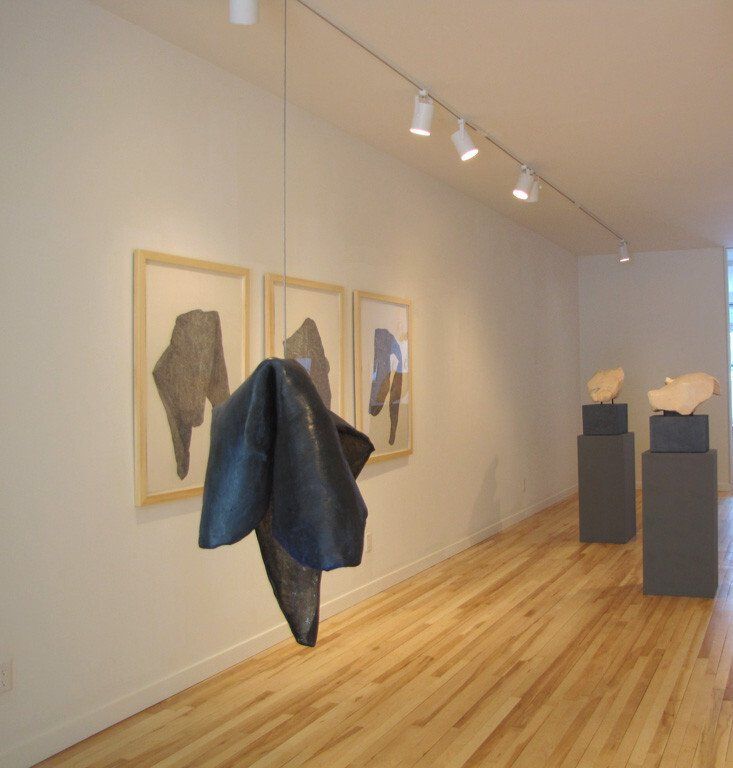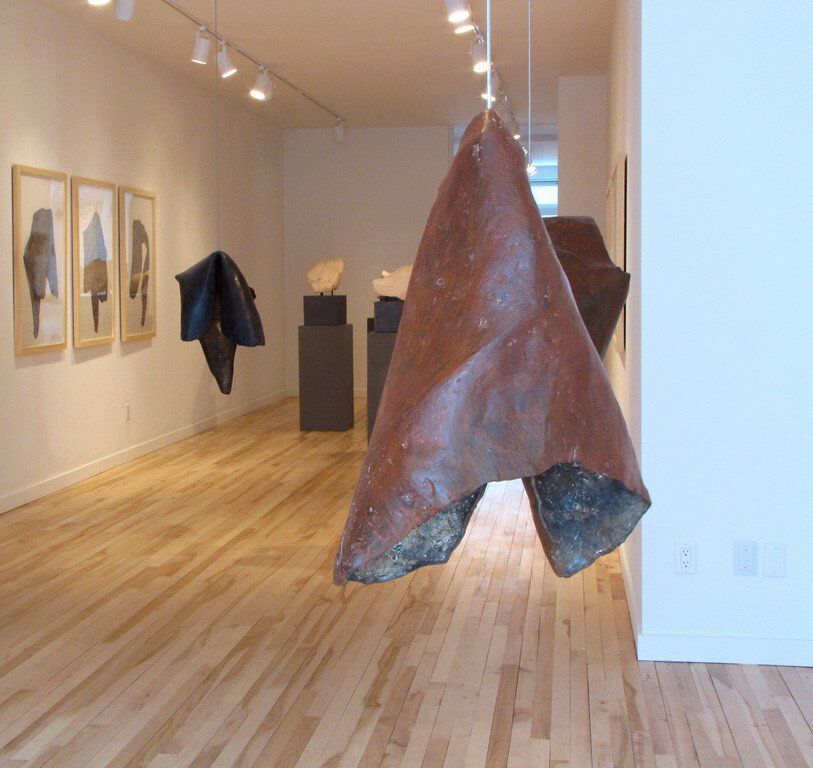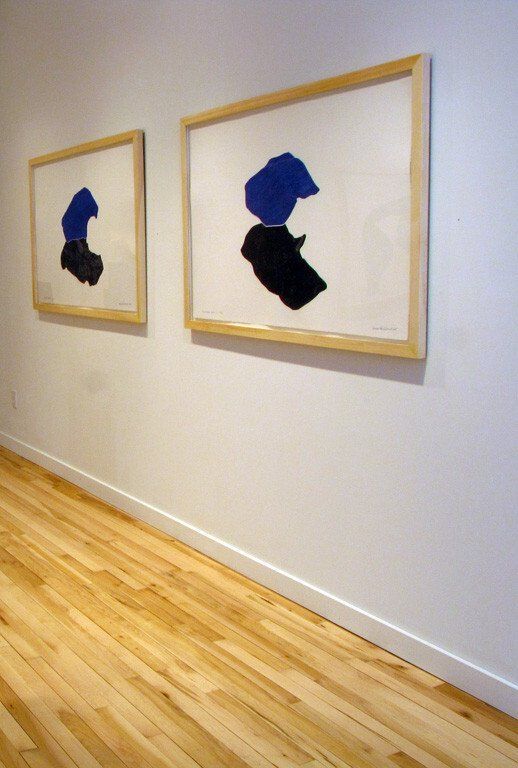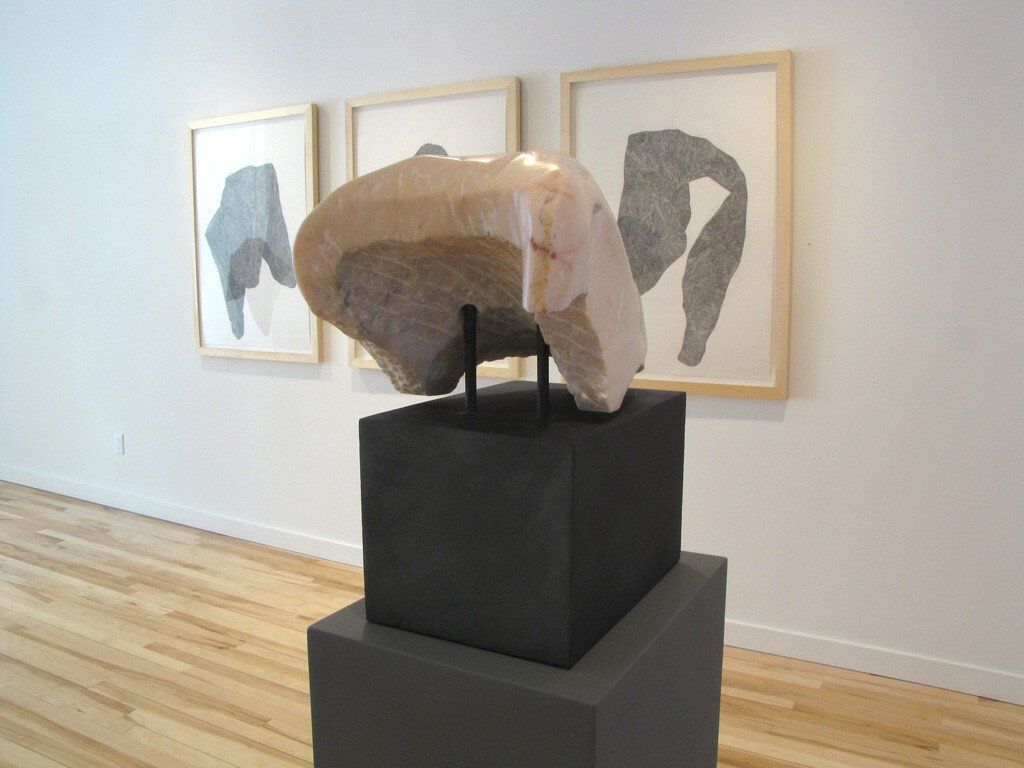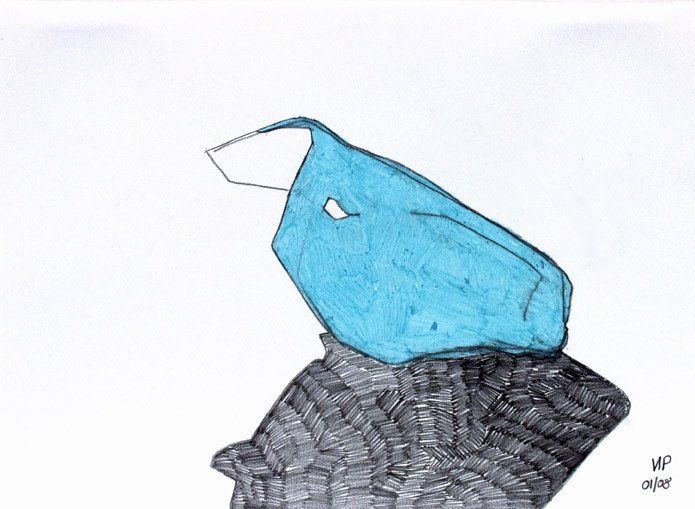Domesticated Beasts, 2009
Solo exhibition at Alison Smith Gallery, Toronto, ON Canada
From January 31st, - March 14, 2009
On Domesticated Beasts:
"Sculpture, for me, is a catalyst for experiences deeper than the exchange of mere information. My works – scaled as they are towards the human body – seek to engage you in a physical encounter, or moment of reflection, that triggers a questioning of our being here. It’s a dynamic that feeds on our curiosity in the ‘thing’ as the autonomous other and our attraction to images that seem familiar but resist clear definition. Ideally, during an encounter with a sculpture, we learn to trust our sensibilities and hopefully add meaning to our lives."
Vanessa Paschakarnis
List of works in the exhibition:
Horned Beings (Pan),2009: Serpentine marble, Bronze, wooden base; 63” x 18.5” x 12” (160 x 47 x 30 cm)
Domesticated Beasts, 2008: 3 of 6 elements, Portuguese Marble, Steel; (Cow) 20” x 14” x 20” (51 x 36 x 51 cm), (Horse with Colors) 20” x 14” x 24” (51 x 36 x 61 cm), (Lady Cat) 14” x 10” x 20” (36 x 26 x 51 cm)
Blue Bell, 2008: 1 element, Bronze, patinated; suspended from steel cable 30” x 19” x 17” (76 x 48 x 44 cm)
Shadows for Bells, 2006 (small bell): Bronze, patinated, suspended from steel cable; 24” x 17.5” x 8.5” (61 x 44.5 x 22 cm)
Shadows for Bells, 2006 ( large bell): Bronze, patinated, suspended from steel cable; 20 x17 x15 inches (51 x 43 x 38 cm)
Domesticated Beasts I; 2008: 4/7, intaglio print, 30 x 47 inches (79 x 120 cm)
Domesticated Beasts II; 2008: 5/7, intaglio print, 30 x 47 inches (79 x 120 cm)
Study for Domesticated Beasts, 1,2: 2008: Drawing (lt. blue), oil pastel, pencil; 9 x 11.75 (23 x 30 cm)
Study for Domesticated Beasts 5,6,7: 2008: Drawing (peach), oil pastel, pencil 9 x 11.75 inches (23 x 30 cm)
Study for Shell 2008: Drawing, Oil pastel, pencil; 9 x 11.75 (23 x 30 cm)
Study for Horned Being, 2008: Drawing, Oil pastel, pencil; 9 x 11.75 inches (23 x 30 cm)
Drawing for Blue Bell, 2008 I / II / III : Pencil on paper; 39 x 27.5 inches (100 x 70 cm)
VANESSA PASCHAKARNIS
Domesticated Beasts
Sculptures in bronze and marble
Drawings and prints
Synopsis of text by Larry Gaudet
The marble heads and torso-like bronzes in Domesticated Beasts – the first show
in Toronto by the German-Canadian sculptor, Vanessa Paschakarnis – celebrate the
elemental connections, the epic dialogue, between the human and the beastly.
The heads are of animals, carved from rosa portugallo marble, the stone
polished to glow pink like a baby’s skin, but also veined by mineralization in soft
blacks and greys that, along with scars incised by the artist, age the works with the
experience that a hard life etches into soft flesh. Mounted as sculptural busts on steel
plinths, the heads graze in repose with sublime eyeless pathos. These are mythic beasts
of burden, evolved from hybrid ancestry, alive with bovine muscularity and equine
grace, tolerant of the yoke of an admiring gaze, but doubtless more at home in the
depths or the wilderness where they can hunt, or be hunted, unwatched.
The bronzes, hung with steel cables, are human in their essence, rendered in
the form of shawls: as textured carapace – a scarred, armoured exterior – protecting a
sizeable cavity: home to the invisible source of ourselves. Paschakarnis calls these
sculptures “bells.” They do function something like church bells, melted of
ecclesiastical formality yet still invested with melodious sonic potential. When struck
with a flicked index finger, the bronzes resonate with wild tones and offbeat echoes,
the diverse acoustics meant to symbolize the richness and range of human feeling.
In this exhibition at Alison Smith Gallery, the experience of contemplation is
bracketed by two modes of perception. The marble heads prey on our susceptibility to anthropomorphic arousal, the act of investing animals with human qualities. There’s a desire to stroke or feed the heads, because they look so gentle up close, despite the foreboding implication in the jawlines. In complementary contrast, the torsos stoke the zoomorphic impulse to witness the animal inside the human. The works, all scaled to human proportions, are designed to nurse one toward a physical encounter with a creature presented as a psychic or spiritual double, a vaguely familiar yet alien sibling.
In Domesticated Beasts, the achievement can be appreciated as the privilege
granted to us, the humans in the room, to contemplate our humanity in the context of our animality. It’s a poignant exercise in the selective breeding of attributes common to the intelligence of so many sentient creatures, not just humans: the capacity to fear and to endure pain, the basic need for affection and for protection, the instinctual belief that life is a struggle, often without progress, requiring that we keep plodding ahead on foot, paw, or fin because that’s what we were born to do.
In this show, Paschakarnis bring into foreground the power and resilience of
the nobler virtues, but also ignoble ones, too: our inhumanity. The sculpted creatures
bear the slashes of cruelty, a reminder that we often treat animals as so much less than human, and some humans worse than animals. In dissolving boundaries between species, Pashakarnis explores the possibility that all living creature are created equal but also the terrible reality that they’re not.








